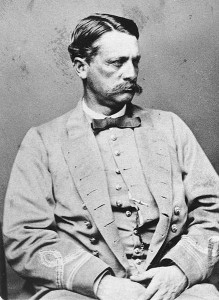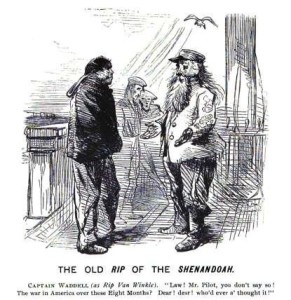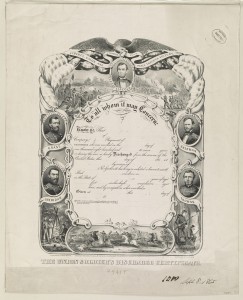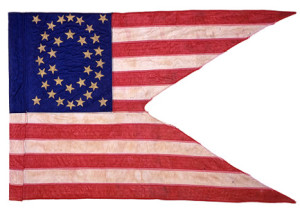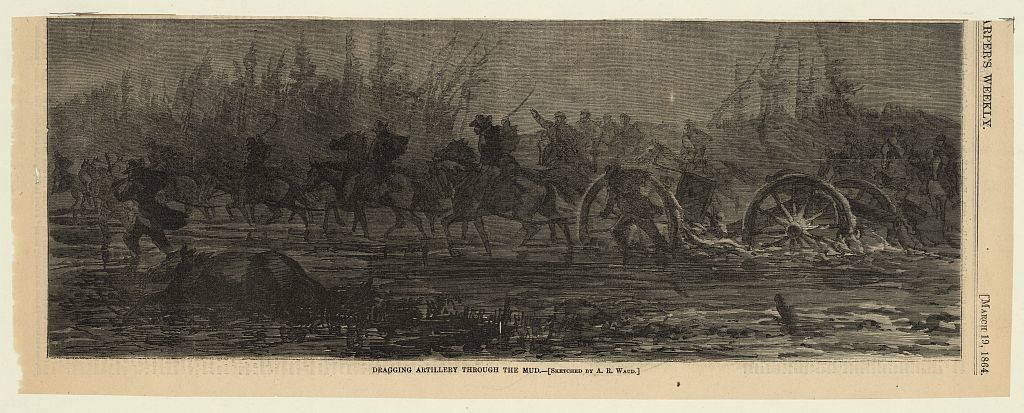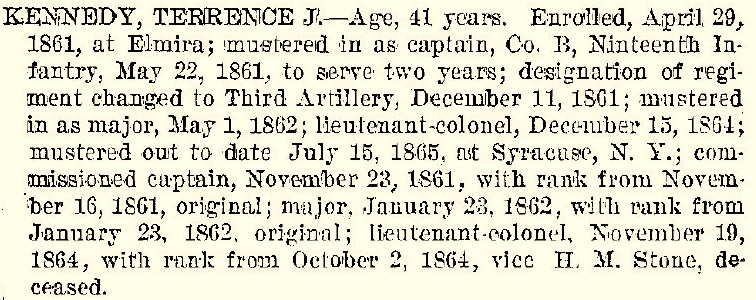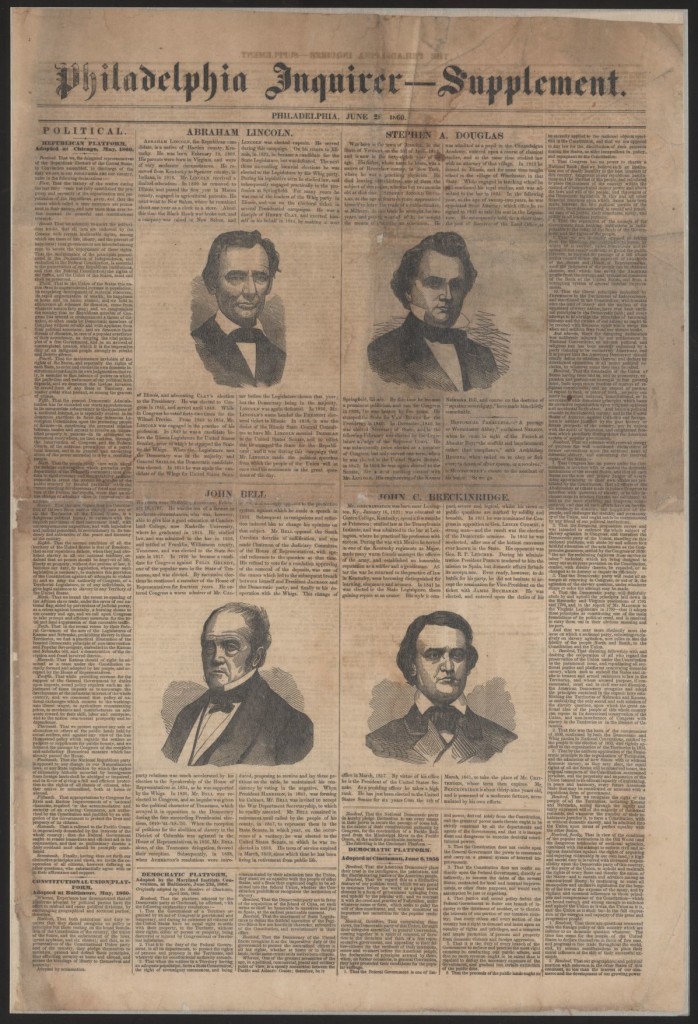and the time
Back on the day, I was absorbed in my own mini-liberation from almost-daily war posting. Here is General Gordon Granger’s June 19, 1865 order at Galveston Texas as the Unio army took control:
General Order No. 3 states:
“The people of Texas are informed that, in accordance with a proclamation from the Executive of the United States, all slaves are free. This involves an absolute equality of personal rights and rights of property between former masters and slaves, and the connection heretofore existing between them becomes that between employer and hired labor. The freedmen are advised to remain quietly at their present homes and work for wages. They are informed that they will not be allowed to collect at military posts and that they will not be supported in idleness either there or elsewhere.”
Back on the day, the war was apparently only almost over. 150 years ago this week a rebel pirate wreaked havoc on Yankee shipping up north – way up north. On June 22, 1865:
The Confederate raider CSS Shenandoah under Lieutenant James I. Waddell fires the last naval shots of the war by capturing the Union whalers William Thompson, Euphrates, Milo, Sophia Thornton, and Jerah Swift in the Bering Sea. Waddell hears rumors that the war has ended from his captives but disbelieves them for lack of evidence.
On June 23 and 26 the Shenandoah captured and burned seven more whalers in the Bering Sea. And on June 28:
The Confederate raider CSS Shenandoah seizes Union whalers Brunswick, Favorite, James Murray, Nile, Hillman, Nassau, Isaac Howland, Waverly, Martha, Favorite, Covington, and Congress, bonding a handful and burning the rest. In a voyage traversing 58,000 miles, this is Waddell’s most enterprising day.[1]
It would be another six weeks before Lieutenant Waddell would be made to believe that the war was really over.
_____________________________________________________________
Away down south in the lower thirty-six, Northern troops were on their way home. From a Seneca County, New York newspaper in 1865:
Third New York Light Artillery.
Three batteries of the Third New York Light Artillery arrived in this city yesterday morning, direct from Morehead City, North Carolina. The Citizen’s Committee gave them a breakfast at the Stanwix Hall. The repast over, Lieut.-Colonel Kennedy made a brief and appropriate speech, returning thanks to the citizens of Albany for the generous welcome extended to them. His remarks were greeted with cheers from the troops, who were apparently delighted with the prospect of soon returning to their homes.
The regiment was one of the first raised in this State, and was mustered into the United States’ service at Elmira, April 16, 1861, as the 19th New York Volunteers, John S. Clark, Colonel. It was soon afterward organized as the Third New York Artillery, James H. Ledlie, who was afterward promoted to a Brigadier-General. The vacancy was filled by the appointment of Charles H. Stewart, of Auburn, as Colonel, who has ably filled the position, he being now on his way to this city with another portion of the regiment. Col. Stewart went out originally as Captain, but was quite early advanced to the position he now so worthily fills. Among the Majors connected with the various batteries, we remember Ammon, Schenck, and Jenny, who have proved their bravery on the field. Lieut.-Colonel Stone died in the service, and was lamented by all who knew him.
The batteries of the Regiment have been in service in the Department of the South, before Charleston, in the Florida campaign, and in all the battles in North Carolina, on the James River, and in the first engagement under McClellan on the Peninsula. Three of them return under command of Lieut.-Colonel Terrence J. Kennedy, who went out as Captain. He was the first man to enlist in Cayuga county. He commenced recruiting on the 9th of April, 1861, six days before Sumter was fired on, and was looked upon as mad by his neighbors, who laughed at the idea of war. He raised his men, and applied to Gov. Morgan for arms and equipment as Light Artillery. The request was denied, upon the mistaken idea that artillery organizations were not then needed.
The following are officers of the Batteries returned:
Battery D. – Capt. Stephen Van Husen; went out as Sergeant. Lieutenants John Stevenson, Jr., Vanderbergh and Brinkerhoff.
Battery C – captain Mowers; went as Sergeant. Lieutenants Edward Cunningham and P.J. Newcomb.
Battery A – Captain Russell; Lieutenants Richardson and Morley.
The men were mainly recruited in Cayuga county, the balance having been raised in Onondaga, Oneida, Seneca and Wayne.
The regiment was accompanied as far as Albany by a portion of the Seventh Ohio Artillery, and while at the landing Lieut.-Colonel Kennedy addressed them briefly. Three cheers were given for each regiment, when they separated, the Seventh Ohio homeward bound, and the Third New York to the barracks on Troy road, where they are expected to remain until mustered out. An effort will be made, however, to secure an order for their removal to Syracuse, that city being near the home of a large portion of the men. Col. Kennedy is exerting himself to accomplish that object, application having already been made to Gov. Fenton. We learn from Major Mulinburgh, the mustering officer here, that permission has been asked of the War Department to transfer the regiment to Syracuse. – Albany Argus, June 29.
A book published in 1873 backed up the idea that Terrence Kennedy was preparing for war well before the rebel capture of Fort Sumter:
[The 49th Militia’s] Capt. T.J. Kennedy, of Auburn, [a paint merchant by occupation, and an artillery officer in the militia of long standing] tendered his services to Gov. Morgan for the enlistment of troops, Jan. 11th, 1861. Thanking him for the patriotic offer, the Governor declined the tendered service on the grounds that troops were not then needed. Our newspaper press of the North, in January 1861, scouted the thought of war, and it required more heroism than the Governor possessed to authorize what Capt. Kennedy proposed. The captain, however, was a close student of public affairs, and was convinced that he was right. He resolved to act, though unauthorized. March 12, he began the formation of an artillery company in auburn, to be held in readiness for service in case of an outbreak in the South. An enlistment paper was prepared in these words: “We, the Undersigned, hereby pledge our Words of Honor to associate ourselves together, for the purpose of forming a light artillery company, to server as long as the war shall last.” It was signed by Kennedy first, then by John Polson. In the course of twenty days, five men signed it. Then enlistments began to come in briskly. After the capture of Sumter, an office was opened in the Armory. By April 17th, Kennedy had 130 men. Next day he heard by letter from Gov. Morgan, that the State could accept infantry only. Disbanding his company, he began again. Forty of the artillerymen re-enlisted. By the 22d of April, such was Capt. Kennedy’s reputation and the esteem in which he was held, he had the honor of reporting again to Albany the enrollment of Cayuga’s first full company of volunteers.[2]
Captain Kennedy’s company would become part of the 19th Volunteer Infantry until it converted to artillery.
______________________________________________________________
______________________________________________________________
On June 28, 1860 (I believe) a Philadelphia newspaper previewed the 1860 presidential election (You can read all about it at the Library of Congress):
_______________________________________________________________
_______________________________________________________________
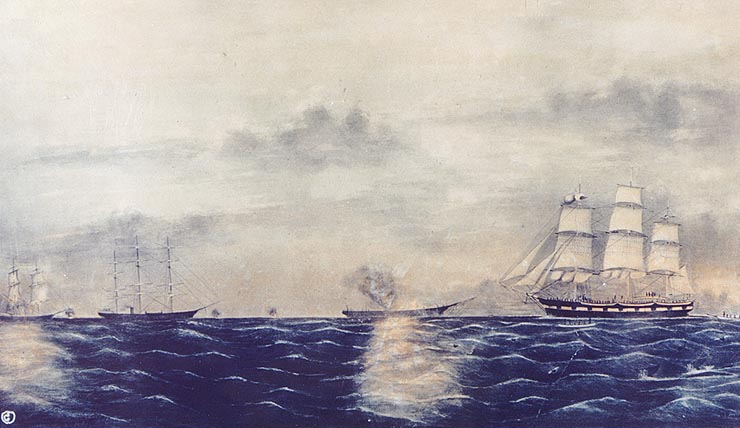
last shots at last? (“Destruction of Whale Ships off Cape Thaddeus Arctic Ocean June 23 [22?] 1865 by the Conft Stmr Shenandoah”)

